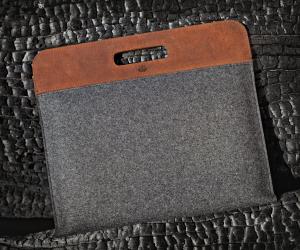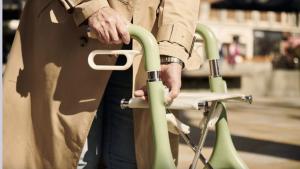Matthew Nielson is South African. Lio de Bruin is Dutch. Nielson is male and De Bruin is female. Nielson likes strong silhouettes and minimalist details, while De Bruin has a preoccupation with rich patterns and textures. So what do they have in common? Leather. They are both designers whose material of choice is leather, which became the defining feature of three products they developed for Common Methods, a collaborative project pairing Dutch and South African designers.
"The creative process was the trickiest bit for us," says Nielson on working with De Bruin. "Neither of us had designed with somebody else before. What was quite nice is that our personalities were well matched and the process became a conversational, back-and-forth exchange between us. I found it useful that I as one person wasn't stuck with my design decision but could bounce it off someone else."
There were also aspects in each of their design approaches that appealed to the other: "What I like about Matthew's work is that it is so simple," explains De Bruin. "And that is the genius behind it." Nielson, on the other hand, enjoyed the attention to detail in De Bruin's more ornate, experimental pieces.
Their successful collaboration resulted in an elegant leather tote bag and a pencil case. But it wasn't all smooth sailing. Initially, a clutch bag was planned for the range but after working on it together the pair decided the resulting design didn't work and they abandoned it.
The final products reflect the strengths of both parties, incorporating Nielson's simple, strong shapes embellished with leather weaving and patterns developed by De Bruin.
The creative process also introduced the duo to new technologies. They used CNC punching as well as CNC cutting to great effect. The tote bag's perforated surface becomes the grid for handwoven elements while CNC scoring creates an intricate surface detail on the pencil case.
They agree that the process of working together was a fruitful one. Aside from producing new designs, they emerged with new skills and experience to reapply to their individual practices.
De Bruin, who normally works on more experimental projects and one-off pieces, felt she learnt a lot from Nielson regarding production and manufacturing for market. Nielsen says the experience enriched his own design approach with a new-found appreciation for patterns and textures that he believes will be reflected in future products for his MatBlac brand.








